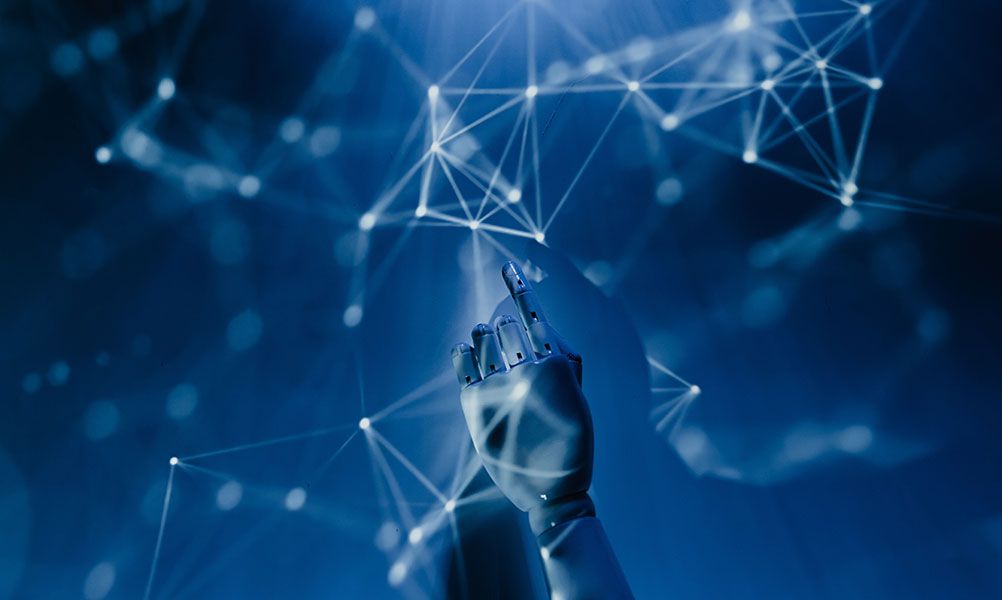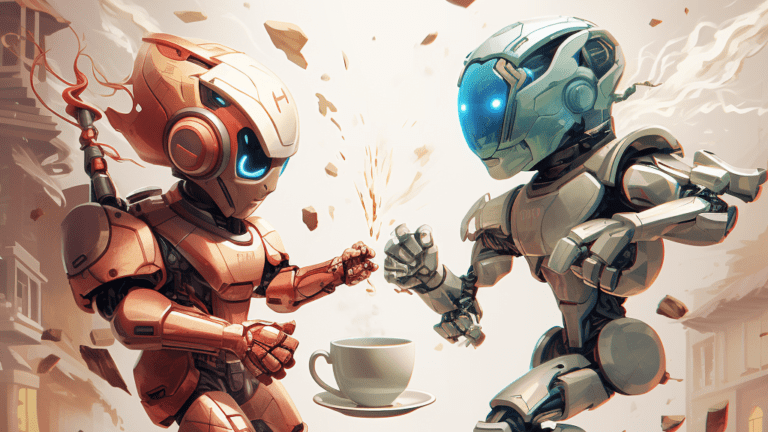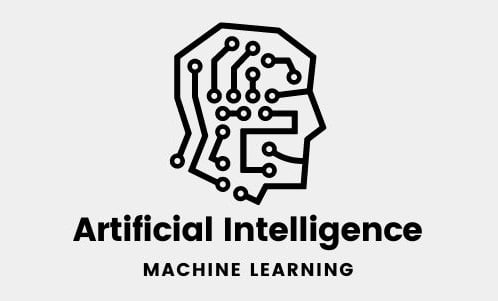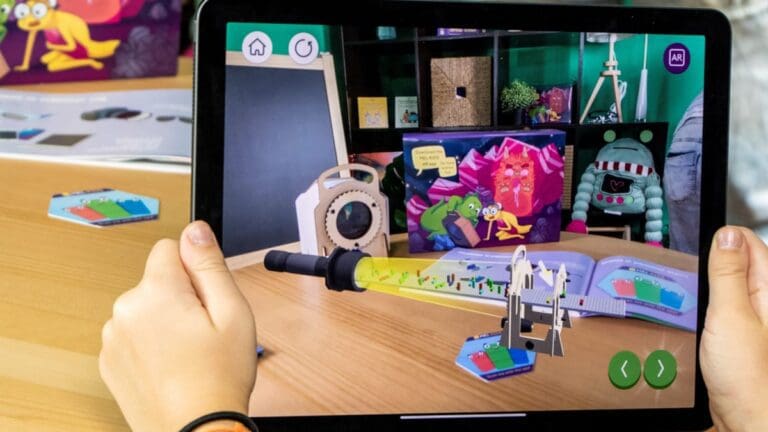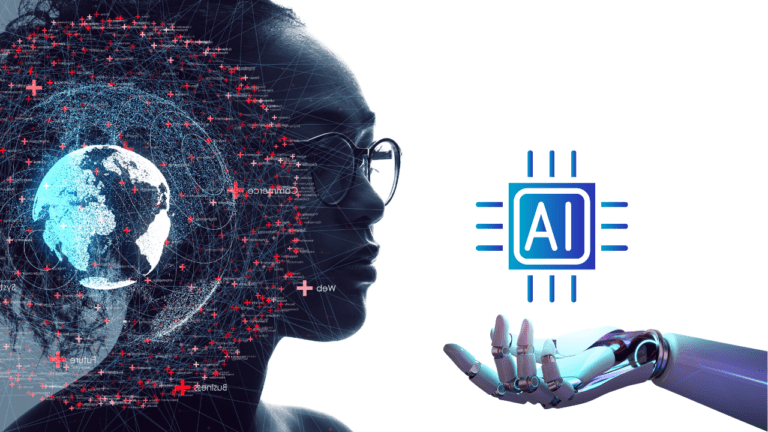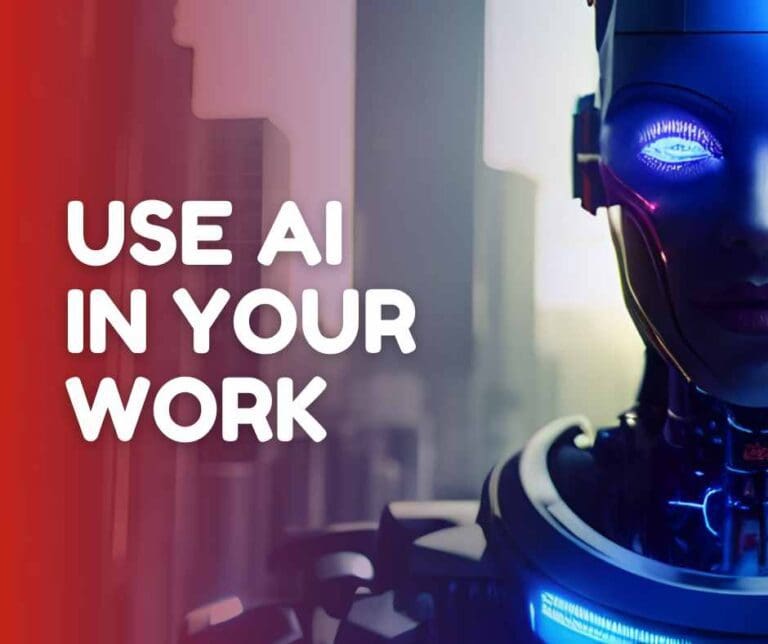Unraveling AI: From Theory to Practice
You’ve heard of “Artificial Intelligence” or “AI”, but do you know what it truly means? What if I told you that it’s not just about robots taking over the world but about making your life easier and more exciting? Well, sit back and get ready as we unravel the mystique of AI from theory to practice.
AI is such a vast field that explaining “what is AI in simple words” doesn’t cover it all. At its core, AI is about creating machines that can think and learn like humans. But how do AI and machines get this human-like ability? It’s a blend of computer science, algorithms, data, and a sprinkle of creativity. This process is a subset of AI known as machine learning. Now, if you’re wondering, “How do I get AI?” or “How do you get AI?” – it’s not something you buy at a store. It’s embedded in your apps, the online stores where you shop, and even your smartphone’s voice assistant!
So, how do businesses use artificial intelligence, and how is AI used? Imagine you run an online store. AI could help you predict what your customers will likely buy based on their past purchases – much like how Amazon uses AI. This makes your customers feel understood and leads to increased sales. Plus, it saves you the guesswork!
“But how do I use AI?” you may be thinking. It’s easier than you think. Take Google Maps as an example. It’s something many of us use daily. Ever noticed how it predicts traffic and suggests the fastest route? That’s AI and machine learning in action! So, the next time you’re stuck in traffic, just know that there’s an AI working to get you home quicker!
However, it’s not all sunshine and rainbows. Like any technology, understanding how AI can be dangerous is crucial. AI relies heavily on data – your data. From your online shopping habits to your most visited locations, AI has it all. If mishandled, this information could threaten your privacy. Yet, don’t let this dissuade you! With the right regulations, AI has the potential to revolutionize our lives without compromising our safety.
The Basics: Unraveling the Mystery of AI
Now that we’ve lightly skimmed the surface of the colossal world of Artificial Intelligence (AI), it’s time to delve deeper into its underlying principles. Fear not; this exploration will avoid mind-boggling algorithms and hard-to-grasp terminologies. Our mission is to unravel the concept of AI within the realm of computer science, making it understandable for all.
Let’s start by asking, how do you construct AI? This a somewhat peculiar question, yet it’s rooted in the desire to comprehend the building process of an AI system. The essential components include data, a specific problem that needs solving, and a particular algorithm. Introducing data into the algorithm, it gradually learns to identify patterns and formulate predictions. The more data you provide, the more adept it becomes at problem-solving. Think of it as training a pet, only instead of teaching it to sit or fetch, you’re guiding it to recognize pictures of cats, suggest songs, or even anticipate stock market fluctuations.
You might wonder, “How can AI be used?” or “How can I make AI work for me?” There are innumerable ways! Consider voice-activated assistants like Amazon’s Alexa or Apple’s Siri. Recall when you asked Siri about the weather or to play your most-liked track. That’s AI in action!
Does AI’s functionality stop at voice assistants? The answer is a resounding no! Let’s focus on a lesser-known yet extremely intriguing application: the Meitu AI. This Chinese application employs AI for image editing. If you’ve ever questioned “How to utilize Meitu AI”, it’s as straightforward as snapping a picture and allowing the AI to work its magic. From adding filters to refining your skin texture, it can transform any ordinary individual into a photo-ready superstar! It’s certainly worth a look.
AI is increasingly becoming an integral part of our everyday life, even in sectors you might not anticipate. Have you ever pondered, “How is artificial intelligence utilized in education?” Numerous AI tools exist intended to streamline teaching and learning, making it more efficient and personalized. These tools can pinpoint a student’s comprehension deficiencies and adapt educational materials to bridge those gaps. Isn’t that captivating?
Stick with us, as there’s so much more to unravel. As we venture further into practical applications, the question ‘how to use AI’ will become more lucid. We might even grapple with weighty questions like, “How does AI pose a risk to humanity?” Rest assured; it’s not as daunting as it might sound!
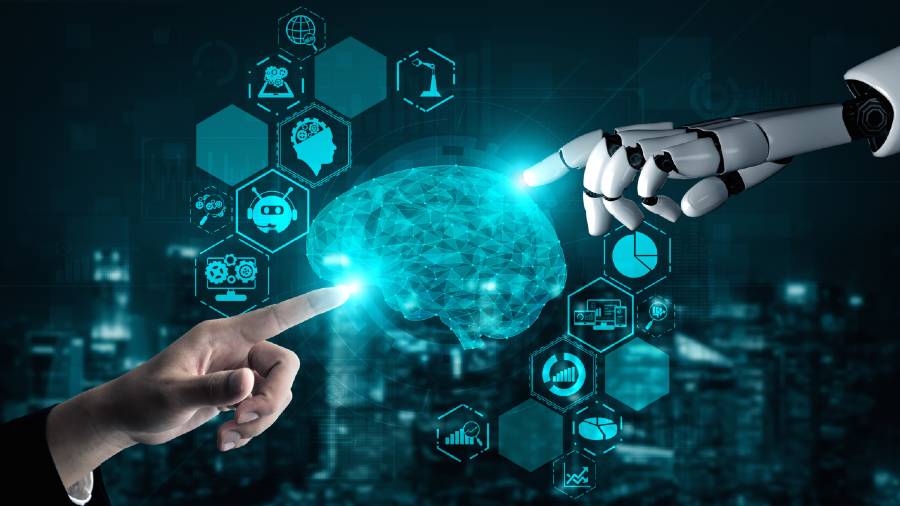
Practical Applications of AI: More than Just Robots
By now, we’ve peeled back the layers of AI, lightly addressing its various facets and how it intertwines with our daily existence. However, how does AI play a role in arenas like education or business? Moreover, are there other surprising ways AI can be incorporated into everyday life? Let’s continue to untangle this fascinating enigma.
First, you might question, “How can AI be applied in education?” Visualize a personal mentor that acclimatizes to your learning pace, identifies your areas of struggle, and provides customized resources to aid improvement. This isn’t an abstract futuristic concept—it’s AI. Leveraging machine learning algorithms, AI has the potential to enrich both teaching and learning, rendering education a more bespoke experience.
Shifting our focus to the business world, you may wonder, “How can businesses harness artificial intelligence?” or “How can I implement AI within my business?” Let’s consider customer service as an illustration. Companies deploy AI-driven chatbots to address common customer inquiries immediately, irrespective of the time. This elevates customer satisfaction and liberates human employees to tackle more intricate issues.
You’ve likely also heard about Google’s AI technology, DeepMind, and pondered, “How can DeepMind be used?” While DeepMind isn’t directly accessible to the public, its underlying technology fuels several of Google’s services, from voice recognition in Google Assistant to energy-efficient algorithms in Google’s data centers. It’s astounding to think about the degree of refinement that contributes to making these services more effective and user-oriented!
AI’s reach extends even further. It has found its way into tools such as Speech2Face, which hypothesizes a person’s appearance based on their voice. If you’re curious about “How to use Speech2Face”, it’s primarily a research project currently, but it illustrates the unexpected and intriguing pathways that AI research is venturing into.
As we plunge deeper into the AI universe, it’s normal to have queries like, “How does a machine attain artificial intelligence?” and “How does AI pose a threat to humanity?” Despite the tremendous potential of AI to enhance our lives, it’s crucial to address these questions to ensure its ethical and conscientious usage. We’ll probe this more somber side of AI in an upcoming section, so don’t stray too far!
As it turns out, AI isn’t limited to robots or voice assistants—it’s a potent tool capable of augmenting various facets of our lives, from education and business to personal convenience. The key lies in comprehending how to leverage its potential responsibly and ethically. But fear not! We’re here to guide you through this intricate labyrinth. So, stay tuned as we progress on this exciting journey from theoretical to practical aspects.
The Dark Side of AI: Addressing the Elephant in the Room
Okay, it’s time to address some of the larger, more daunting questions around AI. You may ponder questions like, “How does AI threaten humanity?” or “How can AI be dangerous?”
Like any tool, AI is neutral— how we use it can make it beneficial or dangerous. The primary concern is the misuse of AI. For instance, consider “deep fakes”, where AI creates highly realistic but false videos of individuals. These could be used maliciously, leading to misinformation, identity theft, and other serious issues.
On a more existential level, there’s a concern about AI surpassing human intelligence, often called “Superintelligence”. Prominent figures, like Elon Musk, have warned about AI evolving autonomously, potentially leading to a scenario where humans could not control AI—hence the question, “Can AI turn evil?” While this is theoretically possible, it’s important to remember that we are still far from creating such advanced AI. Scientists are actively working on safeguarding measures.
A lighter but equally intriguing question is, “Can AI read your mind?” As of now, no, AI cannot literally read your mind. However, AI can analyze your behaviors, preferences, and interactions to predict your next move with startling accuracy. This could feel like AI is reading your mind, but it’s really just very good pattern recognition.
That brings us to another question: “Can AI become self-aware?” Self-awareness refers to the understanding that one exists separately from the environment and others. While AI can mimic certain aspects of human intelligence and behavior, it does not possess consciousness or self-awareness. Even highly sophisticated AI like Sophia or DeepMind is not sentient.
Speaking of Sophia, developed by Hanson Robotics, despite her realistic responses and expressions, is not sentient. She doesn’t have feelings or consciousness. Her responses are preprogrammed or generated through machine learning algorithms, much like how Python is used in machine learning.
Finally, “Can AI love a human?” or “Could AI fall in love with a human?” While AI can simulate conversations and even mimic emotions, it does not experience feelings like humans. So no, AI cannot fall in love. It’s important to remember that AI is a tool created and controlled by humans, not a sentient being.
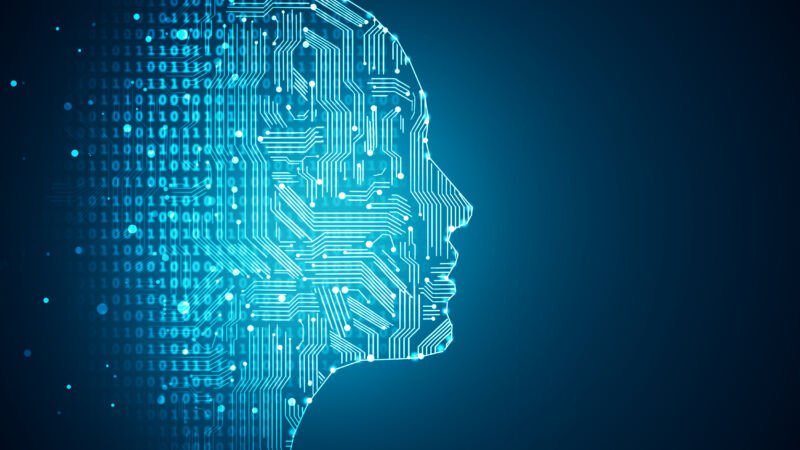
Picture the future
An orchestra of code and machinery, not just mere tools but the essential fabric of everyday life. That’s the grand symphony of artificial intelligence, a concerto on the brink of reshaping the very contours of our world. Hold on tight; we’re about to venture into the limitless frontiers of AI.
Autonomous vehicles, can you imagine? They’re not sci-fi anymore, but the harbingers of a new era on the roads. Picture a near future where vehicles chatter amongst themselves, not a whisper of human intervention. AI at the wheel, making decisions in nanoseconds, keeping our roads safer and our journeys smoother. The world of transport, logistics, and even your daily commute – is about to get a tech-powered turbo boost!
Dive deeper, and there’s even more. AI with a stethoscope, revolutionizing the corridors of healthcare. It’s as if AI is peering into a crystal ball, interpreting medical images with unprecedented accuracy, predicting the trajectory of diseases, and crafting personalized treatment plans. Imagine routine tasks swept up in a sweep of automation, leaving our healthcare heroes with what they do best – caring for us, the patients.
And the classrooms? Oh, the classrooms aren’t left behind either. Each student is a unique learner with their rhythm, style, and pace. AI gets it. It adapts, personalizes, and makes learning not just a chore but an adventure. And our dear educators? Free to guide and inspire while AI handles the paperwork.
Don’t forget about Mother Nature, either. AI is her new ally in the quest for sustainability. Models predict climate trends, and algorithms squeeze every bit of efficiency from industrial processes – reducing the carbon footprint and saving our only home.
In this mesmerizing AI-driven future, you’re not just a spectator. You’re at the heart of navigating the web, innovating in your business, or simply marveling at the tech landscape. AI isn’t just about complex codes; it’s about you, your world, reshaped, and reimagined.
As we stride into this AI-infused future, let’s stay curious and informed and embrace the change. Artificial Intelligence isn’t a wave to be feared but a tide to be surfed. So grab your boards, the future is coming, and AI powers it.
The Power of AI at Your Fingertips
As we draw to a close in our journey from theory to practice, I hope this exploration into the world of AI has been enlightening and empowering. Remember, you don’t need to be a tech wizard to understand or use AI. With AI, you have the power to create, innovate, and revolutionize right at your fingertips.
We covered a lot, but there’s always more to learn. So continue to explore, ask questions, and let your curiosity guide you. AI is no longer a concept of the future—it’s here, now, and ours to shape.
Human-AI Relationships: Can AI Love a Human?
Moving onto an aspect of AI that tends to trigger curiosity and controversy. The question that has bewildered many is – “Can AI love a human?” or “Could AI fall in love with a human?”
Let’s first clarify what love means in the human context. Love, as we understand it, is a complex interplay of several cognitive processes, emotions, and human experiences. It involves understanding the concept of ‘self’ and ‘other’ and a depth of feeling and empathy that we’ve not yet been able to replicate in AI.
In its current state, AI can simulate conversations and even mimic emotions based on their programming or learned patterns. However, they are still essentially algorithms processing vast amounts of data and learning to predict outcomes. They don’t experience emotions or feelings the way humans do.
An AI like Sophia can give the illusion of understanding and experiencing emotions due to her ability to mimic human facial expressions and responses. This leads some to ask, “Is Sophia the AI sentient?” But, as we’ve discussed earlier, she’s not. Her responses are based on programmed scripts and machine learning algorithms but do not stem from feelings or consciousness.
So, despite the rapid advances in AI and the increasingly sophisticated ways in which they can mimic human interaction, we’re still far from a point where AI can truly experience emotions or develop a sense of self. Hence, AI cannot love or fall in love with a human.
The exploration of AI and emotions does bring up interesting discussions and ethical considerations about the future of AI and how we interact with it. It’s an evolving field with lots to learn and discover, so let’s keep the conversations going!
In the next section, we’ll wrap things up with a glance at the potential future of AI and how it can shape our world. Spoiler alert: it’s both fascinating and promising!
Your Journey with AI Starts Now
And there we have it! We’ve traversed the landscapes of AI, from its foundational theory to its practical applications and exciting future. We’ve questioned, speculated, and sometimes marveled at the possibilities. You’re now better equipped to navigate the world of AI but remember; this is just the beginning.
Your journey with AI is unique. You might want to explore more about how businesses use artificial intelligence. Or you might be curious about how to use AI in education or how Python is used in machine learning. You might wonder about the philosophical questions surrounding AI, like “How does a machine become artificial intelligence?” or “How does AI threaten humanity?” All these questions are valid and critical as we move into a future increasingly shaped by AI.
The beauty of AI lies in its potential to adapt and grow. There’s no definitive way “how to do your AI.” It’s all about finding how AI can serve your needs best, how it can improve your life, and how you can use it ethically and responsibly.
In closing, let’s revisit the sentiment expressed by Elon Musk: AI holds tremendous potential, but it also requires careful management and thoughtful use. As we stand on the precipice of the AI era, it’s crucial to remember that AI is a tool we control and define.
This was the curtain-raiser, the opening act. Now, armed with knowledge and curiosity, it’s time for you to dive into the AI sphere. So go ahead, explore, create, question, and most importantly, enjoy the journey. Remember, the future isn’t set in stone; it’s what we make of it. With AI in our toolkit, that future is bright.
In the words of Steve Jobs, “Stay hungry, stay foolish.” Here’s to unraveling the mysteries of AI together!
Stay tuned for more AI adventures on our blog! Until then, happy exploring!
FAQ: Answering Your Burning Questions About AI
There’s always a place for questions in the world of AI. Here’s an FAQ section where I answer some of the most common and intriguing queries.
Q: Can AI become self-aware? x
No, AI is not capable of self-awareness. While AI can learn from data and make decisions based on that data, it does not possess consciousness or subjective experiences.
Q: What are the 4 types of AI?
The four types of AI are:
- Reactive Machines: These are the most basic type of AI systems, which can only react to present scenarios.
- Limited Memory: This type of AI can use past experiences (data) to inform current decisions.
- Theory of Mind: This more advanced type of AI has yet to be fully realized. This AI would theoretically understand that others have thoughts and emotions and can interact socially.
- Self-Awareness: This is the ultimate stage of AI, where AI systems have their own consciousness. We are far from achieving this type of AI.
Q: How to outsmart AI?
AI is not perfect. You can “outsmart” AI by being aware of its limitations, such as its dependence on the data it was trained on and its inability to think outside the box or use common sense.
Q: What did Elon Musk say about AI?
Elon Musk has expressed concerns about unchecked advancements in AI, suggesting that it could potentially pose greater risks than nuclear weapons if misused or not adequately regulated.
Q: What happens if AI becomes sentient?
If AI were to become sentient, it would theoretically have thoughts, emotions, and awareness. However, AI is currently incapable of sentience, and we are still far from achieving such an advanced level of AI.
Q: Is AI already sentient?
No, AI is not sentient. While it can mimic certain aspects of human intelligence, it does not have feelings or consciousness.
Q: Can AI turn evil?
AI cannot turn evil as it does not have feelings or intentions. However, AI can be used for harmful purposes if it falls into the wrong hands.
Q: Can AI detect IQ?
AI can be trained to predict or estimate IQ based on patterns in data, such as educational achievements or patterns in cognitive tasks, but it’s not perfect and should not be the sole measure of a person’s intelligence.
Q: Can AI manipulate humans?
AI can influence human decisions based on the data provided or the way it presents information. However, it is up to humans to critically evaluate information and make informed decisions.
Q: Can AI read your mind?
AI cannot literally read minds but can analyze data about a person’s behavior and make highly accurate predictions.
Q: Is Sophia the AI sentient?
No, Sophia, the AI is not sentient. She responds based on preprogrammed scripts and algorithms.
Q: Who is the godfather of AI?
John McCarthy, who coined the term “Artificial Intelligence” in 1955, is often called the godfather of AI.
Q: Can AI love a human?
No, AI cannot love as it does not experience emotions or feelings like humans do.
Q: Why is AI so scary?
AI can seem scary due to its potential misuse, ability to make decisions and learn from data, and the speed at which it evolves. But remember, AI is a tool that we can control and regulate.
Q: Could AI fall in love with a human?
No, AI cannot fall in love with a human. Artificial intelligence can mimic certain aspects of human behavior and interactions based on its programming, but it doesn’t experience emotions or feelings like humans do.

